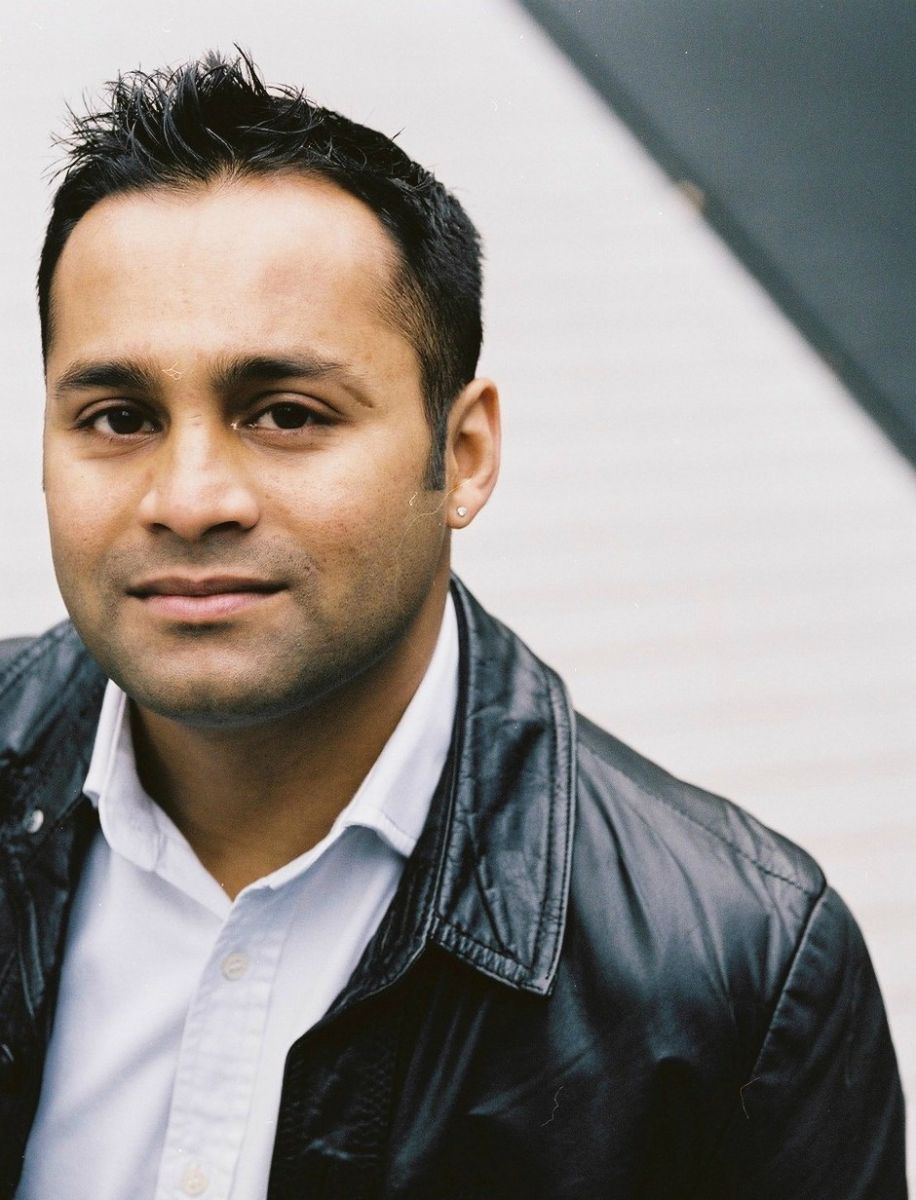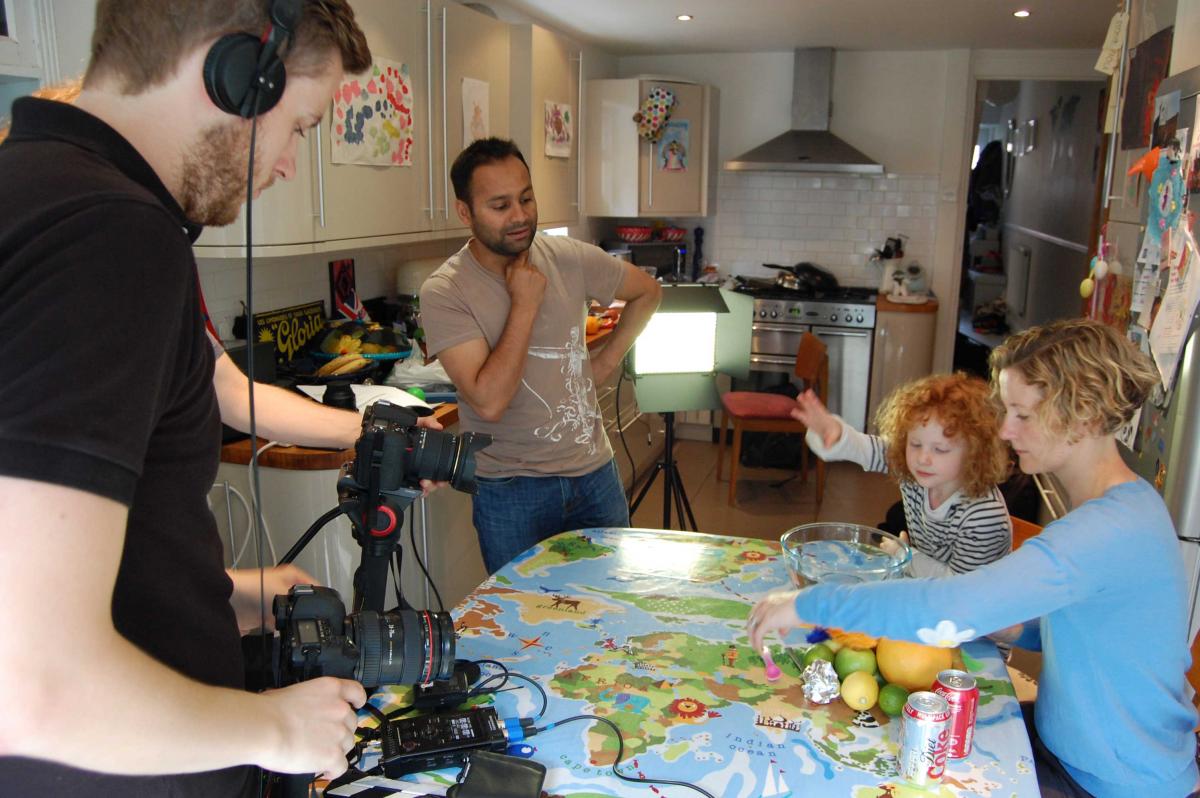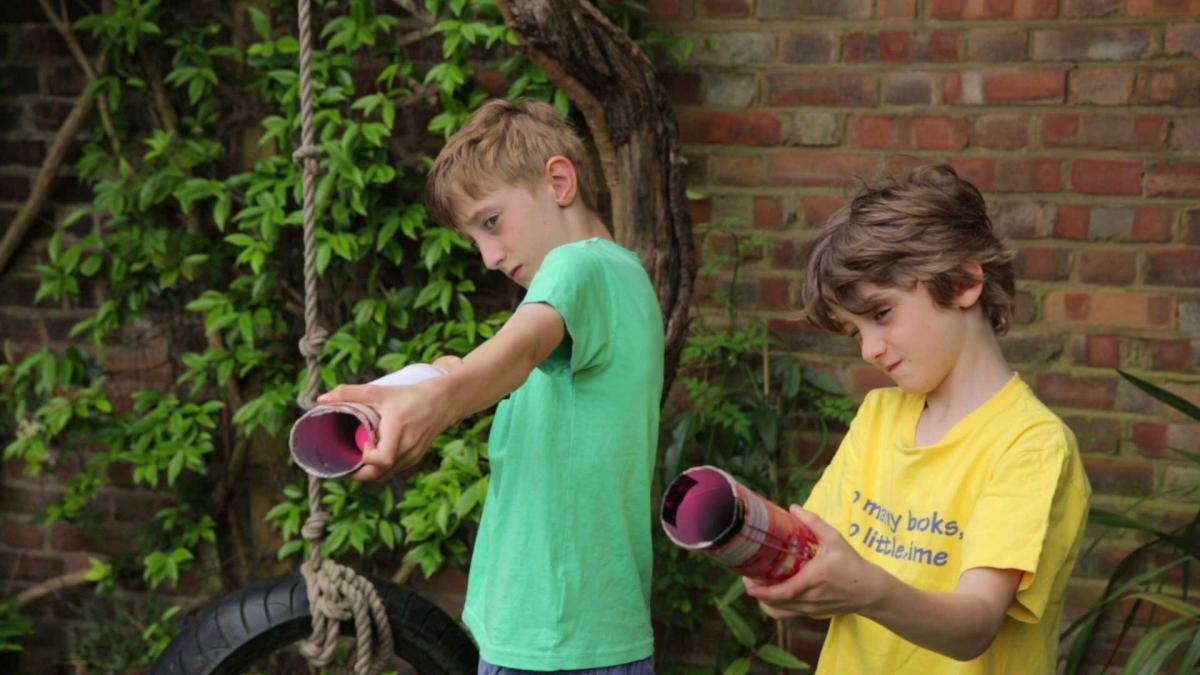Taking teaching home Inspire article
At the Royal Institution, science teacher and communicator Alom Shaha has helped develop the Experimental project to boost science at home.

Image courtesy of Alom Shaha
Last summer, the UK-based Royal Institution (RI) started publishing a series of short films about science activities for children on YouTubew1. Instead of just showing how to perform the experiment, each video shows a parent and their children setting up the experiment, asking questions and working out what’s going on. The Experimental series was developed by science teacher Alom Shaha, who splits his time between teaching physics at Camden School for Girls in London, UK, and making films for the RI.
Parents are often children’s first teachers, Alom explains: “I learnt to read on my father’s knee.” But many parents don’t have the confidence to teach science in the same way, Alom adds, and that’s the goal of these videos – to give parents confidence.
“What we found in our research was that a lot of existing videos and books are about how to physically do the experiments,” he explains. “And they might even give you an explanation of the science…but what we felt was missing was the pedagogical technique to actually get your children thinking critically.”
“As a teacher, I know the importance of using questions to lead students into thinking about problems and experiments,” Alom says. “I feel strongly that science is about asking questions.” So the videos show the same pedagogical techniques that Alom uses in the classroom. Each video also has accompanying information, outlining how to do the experiment and what sorts of questions to consider. “Some of the most positive feedback we’ve had has been along the lines of ‘I didn’t realise that’s how I should have been talking to my child.’”
Positive feedback
The RI has a long history of making science accessible to the public. It is most famous for its Christmas lectures and could be thought of as the home of the science demo. Outside the RI’s London home is a sign saying ’Science lives here’ and Experimental’s motto is a play on this, stating the series is about ‘Bringing science home’.

Image courtesy of the Royal Institution
In particular, the project is aimed at families that might not traditionally do science activities at home, or visit the RI, says Alom. The goal is to help boost what some people term science capital. “If you’ve got people in the family who are scientists or engineers,” he explains, “you are more likely to be exposed to science as a cultural activity and that can have a positive benefit.”
The first videos were produced in time for the summer holidays, but while parents and their children are the primary audience, Alom also hopes that the videos will help teachers of younger children, many of whom might not be confident about science themselves.
“These videos have been produced to help people engage young children in science. They could be 30 children in a class with a primary school teacher or one child with a parent at home,” he adds. “We know that primary schools suffer from a shortage of qualified science teachers.” The Experimental team has already had feedback from many primary teachers who say that the project is an incredible resource.
The website currently features 10 different experiments, most of which focus on physics. However, another 10 with a focus on chemistry are now starting to appear, and Alom can also be found adding other videos on the RI channel. In a year’s time, Alom and his colleagues hope that they might have 30 or 40 activities, with both videos and text-based resources.
The importance of communication
As well as teacher training, Alom is qualified with a master’s degree in science communication, and for the past few years has divided his time between teaching and science communication projects, of which Experimental is the most recent.

Serafino and Alessandro
explore projectile motion
and conservation of energy
Image courtesy of the Royal
Institution
For Alom, the two areas of teaching and science communication are complementary, but he says he is glad that he gained his teaching qualification first. Having taken a break to work in television, he then returned to teaching. “I feel that being a science communicator made me a better science teacher,” he says. “But at the same time I think being a science teacher makes me a better science communicator.” The perspectives of both roles enhance each other in a positive feedback loop.
“Often the two jobs are the same,” he says. “For both, you’re a cheerleader for science and teaching it, and there the pedagogical background helps – there’s an obvious connection.”. For Alom, it’s a pity that more teachers don’t do science communication and vice versa. Of course, managing to combine both activities depends on teachers having the time to take on other roles.
Alom describes working at the RI as an amazing experience, but that is only half of his job. He is extremely grateful to his school for allowing him to work part-time, something he knows is quite rare. “Working with young people and seeing how they relate to science has inspired me to do some of my best work as a science communicator,” he concludes.
A history of education
The Royal Institution in London, UK, was founded more than 200 years ago, in 1799. Its building in London has housed famous scientists such as Humphrey Davy and Michael Faraday. One of the institution’s most famous activities is its annual series of Christmas lectures for children, but this is just one part of the organisation’s broader educational work, including videos like Alom’s and interactive games.
Web References
- w1 – The Experimental project website collects all the videos and resources together.
Resources
- Some of Alom’s other work has focused on helping teachers improve their demonstration skills with Demo: The Movie and developing the resource ‘Why science’ to answer that perennial question from students: “What’s the point of this?”.
Review
Science should be fun both in and out of school, both when done with teacher and with parents. The Experimental videos provide parents with a way to co-construct knowledge with their children in a non-typical educational setting and Alom describes how we (as parents) can explore several phenomena and perform experiments with our children to explain how nature works.
As a teacher I would love to see my students working with their parents at home and I would also like to support them and even invite them in my class to demonstrate their experiments and explain what they learnt. I will definitely recommend the Experimental project to the parents of my students.
Christiana Th Nicolaou, Saint Demetrios Elementary School, Nicosia, Cyprus





